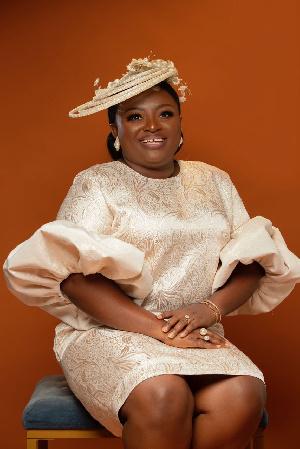Opinions of Wednesday, 8 March 2023
Columnist: Gifty Oware-Mensah
Reflections on International Women’s Day: Was the woman part of it at all?
I have lived life for almost 30 years since my maturity, and I can confidently confirm that, the world has never experienced what COVID-19 visited on it. The defining characteristic of the novel virus is such that, it confines the individual human being to their various environments and grants them the opportunity to work remotely.
This means relying on virtual and digital platforms to execute tasks that would ordinarily require physical presence and contact to finish. The 2023 International Women’s Day is expected to focus on the priority theme for the 67th Session of the Commission on the Status of Women which is “Innovation and technological change, and education in the digital age for achieving gender equality and the empowerment of all women and girls”.
This year’s theme is christened as DigitALL; Innovation and technology for gender equality. As well as this goes, the principle is to understand what gap sits between women and the world in the digital space and the deficiencies it presents in excelling, how these relationships can be mended and provide a unison voice to amplify the collective goal.
In understanding the deficiencies, it is essential to recognize the challenges such gaps present; for instance, since the advent of COVID, and the migration of activities onto the digital platform, one challenge this has presented is the inabilities for the rural woman to appreciate same opportunities and make valid use of same.
The representation of such voices who in some form assume the position of food baskets has remained in the shadows because, the transition did not consider them. Before the pandemic, such voices were heard via forums, townhall meetings and sprinter groups which provided them fresher ideas and incentives to better their lot; unfortunately, the position has had to remain in the primitive situation where women are isolated as a result of gender inequality.
So as the world and the UN continue to explore the margins of a digital age where everything is done on a virtual platform, it is imperative to find the unfortunate threats the female gender faces on the back of Agriculture, water, fisheries and other industries impacted by the sudden experience of the world where most are primary laborers or secondary laborers. The principle established goes to confirm how such unfortunate impacts affect the yields of the women who happened to have been denied education, and are unable to access the incentives migrated unto digital platforms made possible via the advent of the COVID virus.
There is also the need to anticipate the real status of women in the digital age and ascertain how they can play vital roles in them. Laith (2023) maintained that, in the digital age, the real-world status of women and girls has become indivisible from its online counterpart. We are living in 2023, we can’t separate gender equality and technology. Women are still systematically underrepresented in technology and innovation.
This means not only missing out on high-paying jobs, but also on the chance to shape the digital world in which we are increasingly living. Although targeted efforts have given women and girls access to new opportunities, Laith claims that many doors remain barred because of the pervasive influence of gendered norms. When it comes to science and technology, the stereotyping in our societies restricts women's participation and educational opportunities. So we don't even have the foundation to increase the influence of women in the tech industry.
According to the UN Women Newsletter (2023), Women and girls remain underrepresented across the creation, use and regulation of technology. They are less likely to use digital services or pursue careers in technology, and they are far more likely to face online harassment and violence.
This limits not only their own digital empowerment, but also the transformative potential of technology as a whole-exclusion women's from the digital sphere has cost low- and middle-income countries $1 trillion in GDP over the last decade.
We are at a crossroads in the face of escalating global crises: allow technology to widen existing disparities and further concentrate power in the hands of the few, or put it to work for a safer, more sustainable, and more equitable future for all. It further gives four steps to achieve equality in the digital space, i.e., closing all gaps in digital access and skills, support women and girls in STEM, creation of Tech that addresses the needs of women and girls, and further address technology-facilitated gender-based violence.
It is important that we agree to challenge isolation of women in the digital space. In order to achieve this, the first to do is to define government policy for inclusion properly in the context of the society. This is defined to mean the world must accept to develop or encourage policy to guide the use of digital platforms by all and sundry especially women.
The sad reality of the physical world where women are verbally abused, colonized, there is a high level of patriarchal system replicated on virtual platforms. This returns us to the conversation of inequality established above where women in rural communities were ignored during the pandemic because they could barely afford the internet or do not have access to the platforms that even provides same opportunities.
There is the need to consciously provide policy and committed implementation to migrate as many as possible, the girl child or the woman who is vulnerable and lives within the rural community where most of the food and raw materials emanate from to such digital platforms. This drives productivity and yields globally.
Happy International Women’s Day.
Entertainment










